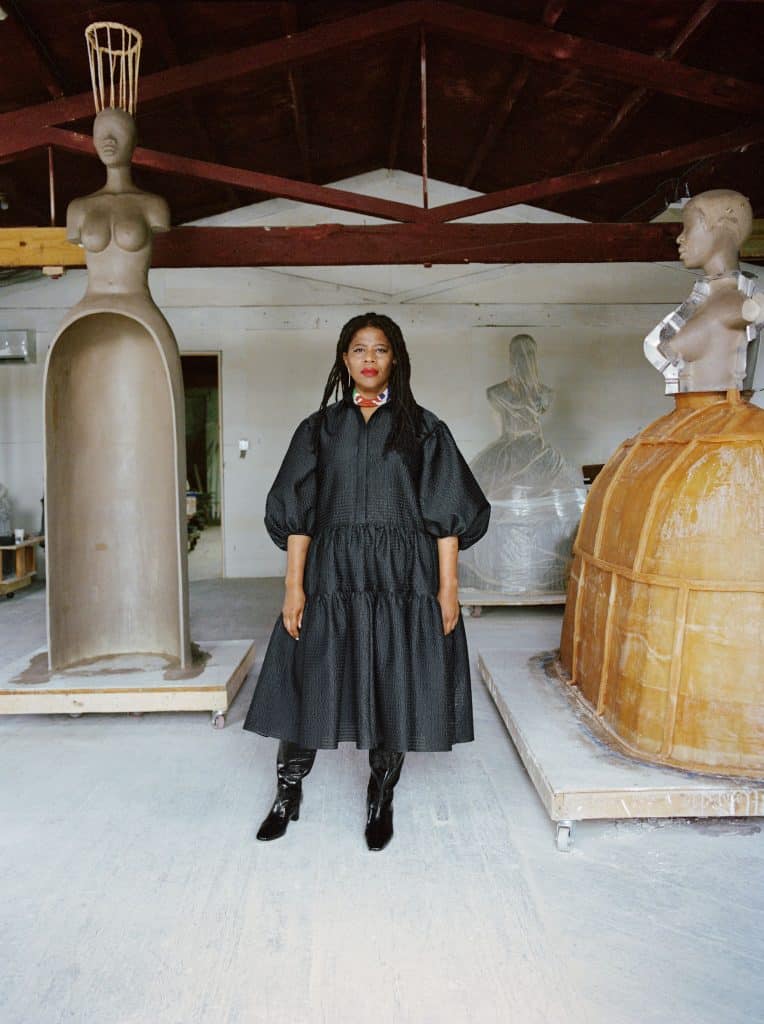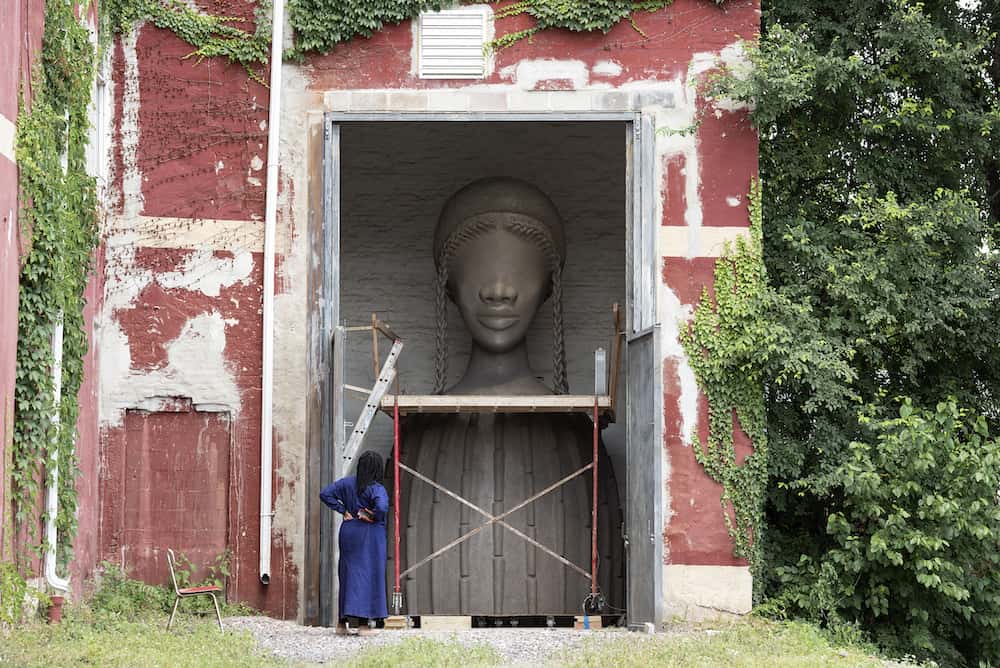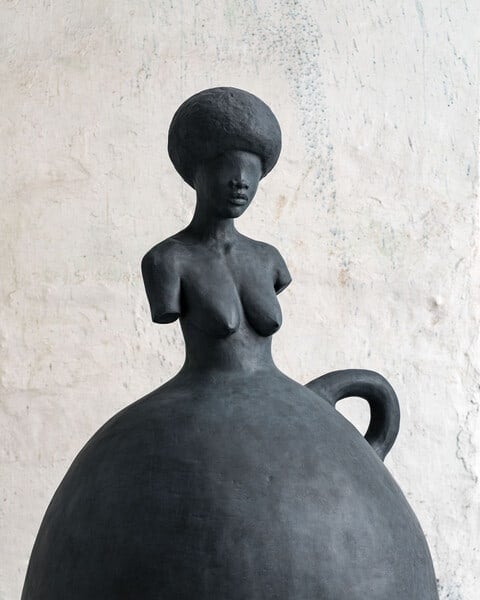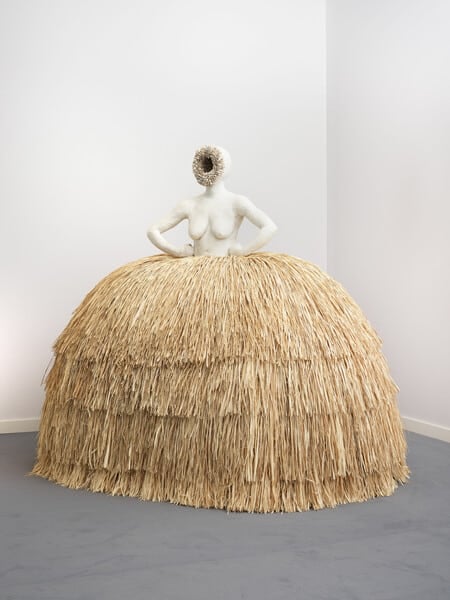Articles and Features
Simone Leigh, The Sculptor Making History at the Art World’s Biggest Fair

By Adam Hencz
“The way you understand a sculpture is by relating it to your own body, so you feel its edges and its presence in space by that relationship. When I think about a young black child relating to that sculpture, it’s very exciting for me.”
— Simone Leigh
The Brooklyn-based artist Simone Leigh, renowned for her sculptures revolving around the black female experience, will be the first Black American woman to occupy the American Pavilion for the Venice Biennale. The Institute of Contemporary Art/Boston (ICA), in cooperation with the US Department of State’s Bureau of Educational and Cultural Affairs, announced the artist’s selection earlier this month. The artist will make her debut in 2022 with a new series of sculptures, including a monumental bronze sculpture for the pavilion’s outdoor forecourt. This new body of work created exclusively for the prestigious art event will populate the gallery space along with the pavilion’s five galleries with figurative representations for the first time in years.

After being ignored for over the course of nearly two decades by the contemporary art world, Leigh’s repertoire of figures, vessels, and large-scale clay house structures are enjoying increased visibility. Born in 1967 in Chicago to Jamaican parents, Leigh came to her artistic practice via studying philosophy and having a strong interest in cultural studies as well as African and African American art. Her first job in New York was reproducing tiles for the subway at an architectural ceramics firm. Her career as an artist began to take off when she was chosen to create a specially commissioned multimedia project for the influential Studio Museum in Harlem residency in 2010. The Solomon R. Guggenheim Museum awarded Leigh the Hugo Boss Prize in 2018. In the meantime, the artist started working on a much larger scale and Leigh became the first artist to be commissioned for the High Line Plinth, and debuted her monumental sculpture Brick House in April 2019. The same year, she was chosen among participating artists at the Whitney Biennial.
Spanning through sculpture, video, installation and social practice Leigh continuously and persistently incorporates the exploration of black female subjectivity in her projects and testifies to the value and power of a collective female force. She articulates narratives like female identity, power in femininity, healing pain, and black women as containers of knowledge and a form of material culture. Her social projects range from Free People’s Medical Clinic (2014) held in a house in Brooklyn, that offered HIV screenings, modern dance, lessons in herbalism, yoga and massage sessions, to The Waiting Room (2016), an exhibition at the New York City’s New Museum focusing on the flaws of the US healthcare system and providing free educational seminars with experts on holistic care and self-supporting lifestyle.


She works in an auto-ethnographic mode, but there are moments in which she explores fiction in order to materialise her ideas. Her repertoire represents a particular type of creolisation between West African and American cultures incorporating a wide range of materials, from stoneware and raffia to pipe, concrete block, and more recently, cast bronze. Forms that recur in her work, like the cowrie shell, the dome shape or the jug evoke the material culture of African-Americans. She explains the cowrie shell as a stand-in for the female body while the dome shapes recall the Mousgoum buildings in Cameroon and other West and North African architectures. In her mash-ups of the body with functional objects and architectural constructions, the female form is abstracted and blended into a representation of women across the diaspora, like in her 2019 work created for the Guggenheim Museum, The Jug with its torso reminiscent to early 20th century West African sculpture, the African-American form of the jug and a contemporary coiffure in a way it is formed.

The 2022 US pavilion is co-commissioned by Jill Medvedow among others. “The scale and magnificence of Leigh’s art demands visibility and power; it is probing, timely, and urgent. We are proud and honored to share this work with audiences from around the globe at the next Biennale in Venice,” says Medvedow. Following Simon Leigh’s show at Venice Biennale, a major monograph will be presented at The ICA in 2023, which is set to be the largest survey show of the artist to date.
Relevant sources to learn more
A Short History Of the African Diaspora Through the Eyes of Its Visual Artists
The Rise of African American Artists on the Auction Market and in the Art World at Large
Changing the narrative: African American artists Wangechi Mutu and Kehinde Wiley harness the rhetoric of monumental public sculpture
ICA Announcement